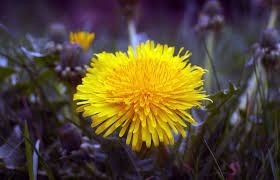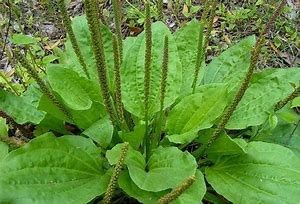Written by guest blogger Tatum Andrews from Bear Roots Forest in Belleisle, New Brunswick.
Yes, that’s right there actually is food growing all around us! Some may refer to them as weeds but if only they knew how nutritious and yummy these wild foods are. This blog will introduce you to a few of the most common wild foods growing in New Brunswick however there are many more to discover! Before consuming any plant make sure you have properly identified it using a plant ID book or take an herb walk with your local herbalist.
Dandelion (Taraxacum officinale)

Photo Credit: Tatum Andrews
Dandelion leaves are super nutritious and they should be eaten as often as possible. Dandelion leaves have long been considered a spring tonic. When young and fresh, the leaves have a delicate bitter taste that stimulates digestion. Dandelion flowers are high in lutein, a constituent known to dramatically support eye health. They have a surprisingly sweet and mild flavor. They can be added to your salad! A cup of dandelion flower tea with a little honey can help to relieve and heal headaches, menstrual cramps, backaches, stomach aches, and even depression. Dandelion roots and leaves are abundant in rich amounts of usable minerals such as calcium, iron, copper, magnesium, manganese, phosphorus, potassium, selenium, silicon, and zinc. They are also an excellent source of vitamin A, the B complex vitamins, C, and D. They supply beneficial carotinoids, fatty acids, flavonoids, and phytosterols. Dandelion roots and leaves contain high amounts of potassium. Dandelion leaves have three times more calcium, iron and Vitamin A than spinach! The leaves are 19-32% protein. Dandelion greens are high in fiber, which helps your body shed waste.
Plantain (Plantago major)

Photo Credit: Tatum Andrews
Broadleaf plantain is also a highly nutritious wild edible, that is high in calcium and vitamins A, C, and K. The young, tender leaves can be eaten raw, and the older, stringier leaves can be boiled in stews and eaten. The leaves are edible as a salad green when young and tender, but they quickly become tough and fibrous as they get older. The older leaves can be cooked in stews. Due to its astringent properties, a tea of plantain leaves can be ingested to treat diarrhea. Due to the high vitamin and mineral content, plantain tea simultaneously replenishes the nutrients lost because of diarrhea. Adding fresh plantain seeds or flower heads to a tea will act as an effective lubricating and bulking laxative and soothe raw, sore throats.
Violet (Viola tricolor)

Photo Credit: Tatum Andrews
Violet leaves and flowers are highly nutritious in vitamins A and C, and high in antioxidants. During cold and flu season, the high vitamin C content will give a virus-preventative boost to the immune system. After gathering the leaves, either eat them raw in salads with an herby vinaigrette, or cook them like spinach in a little water with butter, adding salt and pepper to taste. Serve the cooked violet greens with the residual liquid to preserve the vitamins. Violets have been used to improve acne, anger, asthma, bronchitis, colds, eczema, fever, fibrocystic breast disease, grief, headache, heartbreak, lymphatic congestion, mastitis, mumps, psoriasis, scurvy, sore throat, ulcers, urinary tract infection, varicose veins, and whooping cough. Apply a cloth soaked in violet leaf and/or flower tea to the back of the neck to treat headaches. The flowers are eaten as a breath freshener.
Chickweed (Stellaria media)

Photo Credit: Tatum Andrews
Fresh chickweed contains high amounts of vitamin C, as well as vitamins A, D and B. Iron, calcium and potassium can also be found in chickweed. Chickweed leaves can be steamed or added raw to salads. You can also make a tea from the leaves by steeping them in a cup of boiling water for ten minutes. Chickweed can soothe mucus membranes and help relieve many respiratory conditions, including asthma, allergies and bronchitis, as well as itchy, inflamed eyes. Chickweed’s soothing properties also extend to skin care. Chickweed can soothe inflamed and irritated skin conditions such as acne, eczema, rashes and burns, as well as heal cuts.
WILD FOOD RECIPE
Dandelion Lemonade
You’ll need about 2 quarts of flowers to make a gallon of lemonade.
Bring the flowers inside and place them in a gallon jar. Fill the jar with room temperature water and add the juice of 4 lemons. Add fresh honey to taste, and chill. You can strain the flowers out after a few hours or just leave them to fall into the glasses when you serve the lemonade.
Hungry for more? Visit Bear Roots Forest https://bearrootsforest.ca/category/living-the-herb-life
Tatum Andrews is a Registered Holistic Nutritional Consultant and Chartered Herbalist who has a medicinal herb farm, Bear Roots Forest, in the beautiful Belleisle Bay area of NB. Her farm uses permaculture and biodynamic practices to consciously influence the life processes in nature so that harmonious and healing forces will be present in the medicinal herbs grown and wild-crafted.
Learn more about Our Food SENB: ourfoodsenb.ca
Follow us on Facebook, Twitter, & Instagram: @OurFoodSENB
Learn more about The Our Food Project NS: https://ecologyaction.ca/ourfood
Follow us on:
Twitter: @OurFoodProject and @ecologyaction
Facebook: The Ecology Action Centre
Instagram: ecologyaction




